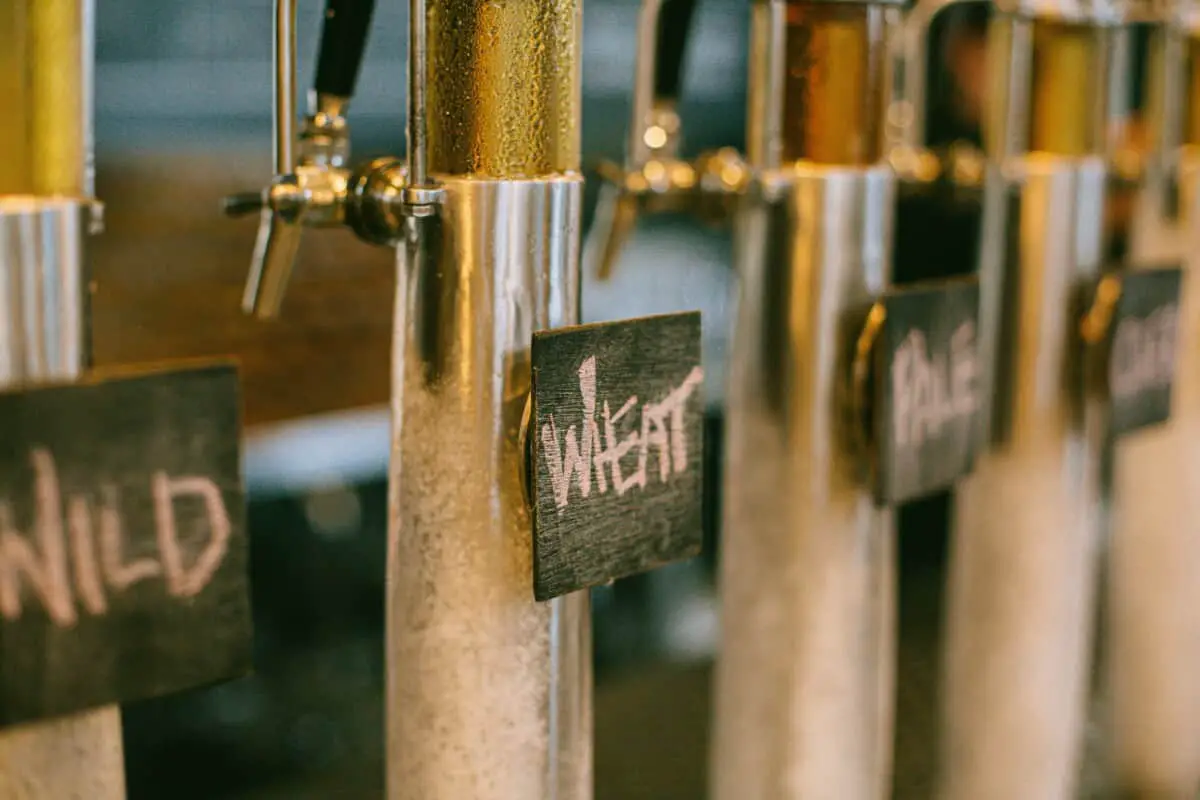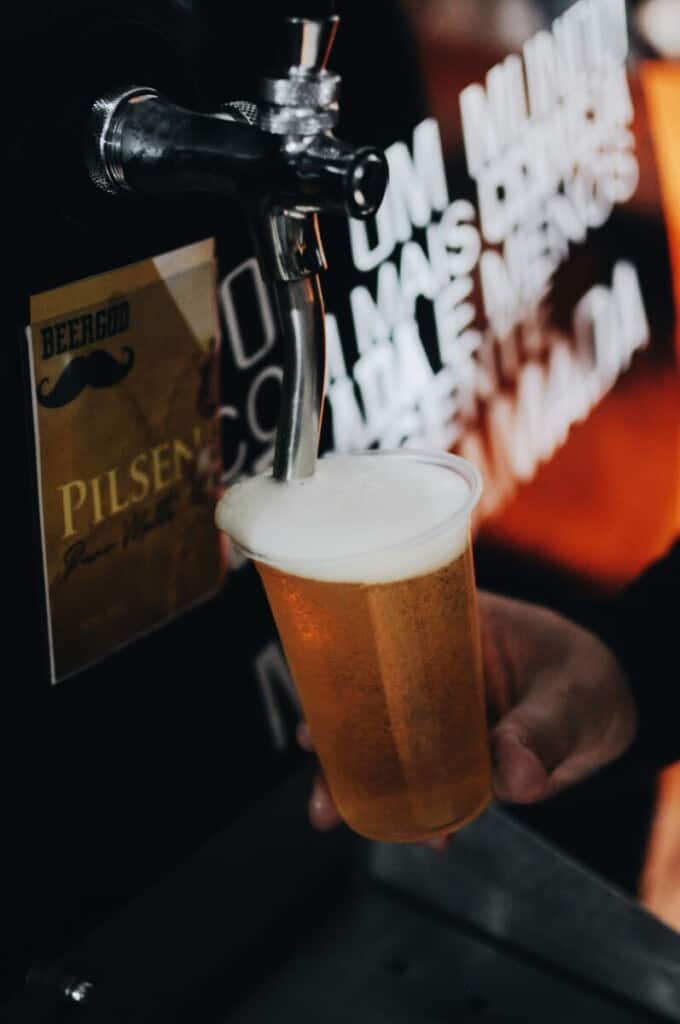
Wheat beers are some of the most inviting beers available in the beer world today. Their tangy flavor combines well with a variety of fruits, and many brewers add seasonal fruits and berries to their recipes.
Wheat beers are top-fermented, making them ales and not lagers, which are bottom-fermented. American wheat beers typically contain at least 30 percent malted wheat, although some have as much as 70 percent. Usually served unfiltered, they are light in flavor and highly effervescent.
To better understand wheat beers, this article will explain the difference between lagers and ales, provide detailed information about some popular wheat beer types, and show you how you can easily make wheat beer at home.
What Is the Difference Between Lagers and Ales?
Lagers and ales are two popular styles of beer fermented using grains. Lagers are typically smooth, light, and easy to drink. On the other hand, ales are usually full-bodied and are fruitier, sweeter, and more complex in flavor than lagers.
However, their main difference is the temperature at which they are fermented. Lagers require lower temperatures and are bottom-fermented, and ales need higher ones and are top-fermented.
What Is Bottom-Fermentation?
Lager yeast is much more delicate than the yeast used to produce ale, ferments more slowly, and typically has a lower tolerance to alcohol. Additionally, it settles at the bottom of the beer after fermentation and requires cooler temperatures than ale, hence the name of this style of fermentation.
Typical lager requires temperatures of about 42 to 55°F (5.6 to 12.8°C) and takes longer than ale to ferment due to those lower temperatures. As the story goes, Bavarian brewers learned that storing this beer in cold caves during winter produced a smoother, mellower tasting beer. Since lager means “to store” in German, they adopted the word as the name for this type of beer.

When it comes to flavor, lager yeasts usually produce beer that has smooth, crisp flavors that highlight the beer’s malty ingredients. Contrary to popular opinion, not all lagers are low in flavor or light in color. The color of any beer is proportional to the level of malting or toasting of the grains used to produce it.
Examples of bottom-fermented beers include German-style bocks, dark lagers, pale lagers, and pilsners.
What Is Top-Fermentation?
The yeast used for producing ale is hardier than the yeast used for lagers, ferments much faster, and has a high tolerance to alcohol. Additionally, it rises to the top of the beer after fermentation and requires warmer temperatures than lager.
Most ales require temperatures ranging from 60 to 75°F (15.6 to 23.9°C). Historians consider ales to be one of the oldest beverages invented by human beings. They played a vital role in medieval nutrition due to the preservative qualities of its alcohol. During the Middle Ages, ales were consumed by children, men, and women since it was safer to drink than most water, which required boiling.
When it comes to taste, ales produce fruitier and spicier flavors than lagers since the warmer fermenting temperatures release compounds called phenols and esters. Typical natural characteristics for ales include banana, clove, pineapple, and vanilla.
Examples of top-fermented beers include Wheat beer, Belgian-style beer, brown ale, India pale ale, porter, and stout.
What Are Some Examples of Wheat Beers?
There are several different kinds of wheat beers available on the market these days, from classic brews to newer craft beers. Below are four examples of popular kinds of wheat beers along with brief descriptions.
- American Wheat Beer: Served unfiltered, this wheat beer is the light amber, and its clarity ranges from brilliant to slightly hazy when roused. It has medium to high effervescence and the aroma and flavor of hops with a low to medium bitterness.
- Berliner Weisse: This wheat beer uses a special yeast called Lactobacillus delbruckii, which gives it a mouth-puckering tartness. For that reason, many fans like to add a fruit-flavored syrup to sweeten it a bit. It is an extremely effervescent beer and light. Learn more about sour beers from an article we wrote on the best ways to brew a sour beer.
- Hefeweizen: Perhaps the best-known wheat beer, hefeweizen, is a Bavarian-style beer that pale-colored and cloudy. It is bottled unfiltered, so the yeast is still present when served. Its yeast gives this beer a hint of banana and clove to this beer’s aroma and flavor.
- Dunkelweizen: A slightly darker beer, dunkelweizen is a hefeweizen that gets its brown color from its malt, which is roasted longer than many other wheat beers. It has medium to high effervescence and has caramel notes as well as those of banana and clove.

Expand Your Pallet
When it comes to brewing beer or judging the differences, its always good to try a variety of beers to expand your understanding and explore new tastes.
Sometimes its difficult to do, when buying beer at the store, you generally have to get an entire 6 pack of the same thing. That’s why I suggest trying out CraftBeerClub.com.
How to Make Wheat Beer at Home?
Making wheat beer at home is simple and easy, particularly if you have the right tools. For example, a variety of great books talking you through the process are available online. Additionally, you can purchase a range of different kits for making wheat beer.
Books for Making Wheat Beer
Brewing with Wheat: The Wit and Wisdom of Wheat Beer Styles is a great book that takes you on a journey to the ancestral homes of some of the world’s most exciting styles of beer. For example, author Stan Hieronymus visits Berlin, Kelheim, Leipzig, Hoegaarden, and even Portland, Oregon, to learn about traditional brewing techniques and what improvements are in place today.
Additionally, Brewing with Wheat includes complete brewing instructions, recipes, and answers to frequently asked questions about making beer.
German Wheat Beer is another excellent book detailing the history, traditions, and brewing techniques of the truly unique style of beer. Author and brewmaster Eric Warner discusses the best way to drink familiar wheat beers like Weissebeer and even recommends food pairings for German wheat beers. He also provides instructions and recipes for aspiring homebrewers.

The Complete Joy of Homebrewing Fourth Edition: Fully Revised and Updated is an excellent book for homebrewers interested in detailed step-by-step instructions for making a variety of different styles of beer to include wheat beers.
Available in Kindle and paperback, this book gives you all the information you need to get started. For example, it covers the basics of setting up a home brewery, includes world-class recipes, and discusses the latest advancements in the art of brewing beer.
Kits for Making Wheat Beer
Purchasing beer making kits, fermentation kettles, and ingredient kits are a great way to get started making beer at home. Northern Brewer makes a One Gallon American Wheat Craft Beer Making Starter Kit that makes brewing authentic craft beer at home a breeze.
This kit includes a one-gallon glass fermentation jug with cap and airlock, a mini auto-siphon and tubing, a bottle capper, and pry-off caps.
Additionally, this home brewing kit includes all the ingredients you need and simple step-by-step instructions. And, if you have any questions purchase include access to Northern Brewer’s customer service experts.
Klarstein makes a 25-Liter Maischfest Fermentation Kettle if you want to make beer in larger quantities. This fermentation kettle is constructed using 304 stainless steel, which provides hygienic fermentation and simple clean-up after use. Its supplied plastic fermentation tube ensures you get the necessary pressure equalization while fermenting your beer. And, you can tap the beer directly from the kettle using its built-in drain tap.
If you decide to purchase a fermentation kettle, Brewer’s Best offers a Five-gallon Witbier Home Brew Ingredient Kit that includes all the fresh ingredients you need. If you aren’t familiar with Witbier, it is a classic white ale brewed with wheat, barley, coriander, and orange peel. Lightly hopped and fermented with Sasfbrew WB-06, Witbier has a dry, fruity, and spicy finish.

What We Learned About Wheat Beers Today
Hope you enjoyed our article about wheat beers and the difference between lagers and ales. When it comes to wheat beers, there is a near-endless stream of different kinds to enjoy. Better yet, we gave you the tools to create tasty varieties in the comfort of your home.
Before you leave, be sure to check out our other articles and share our website with all your friends who enjoy a crisp, refreshing glass of beer after work and on weekends.
